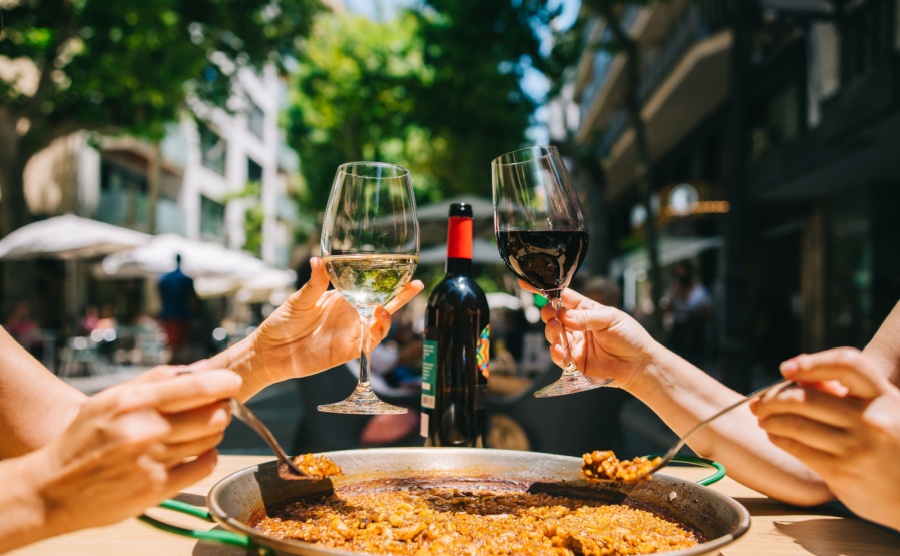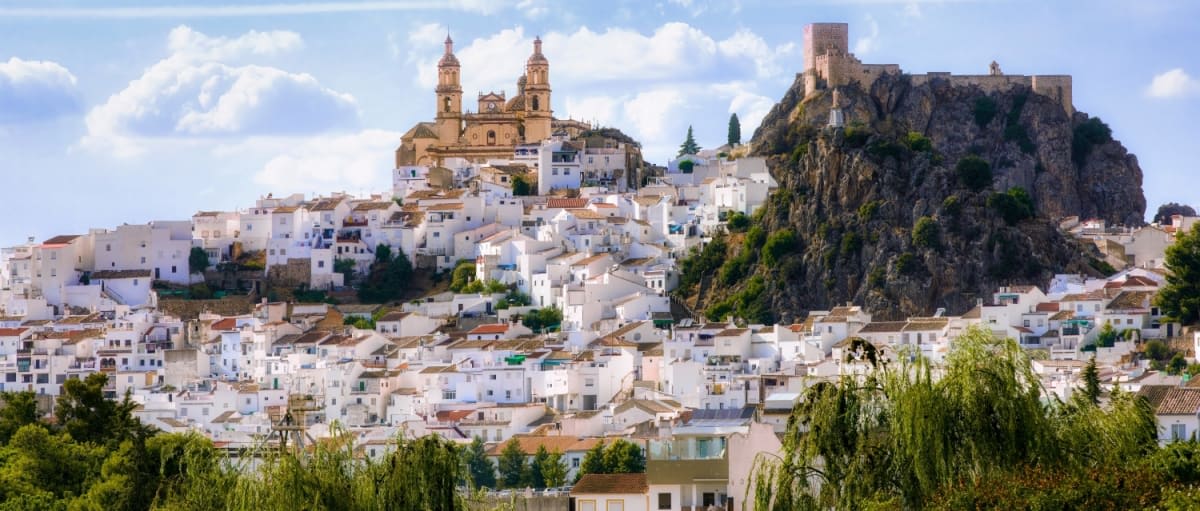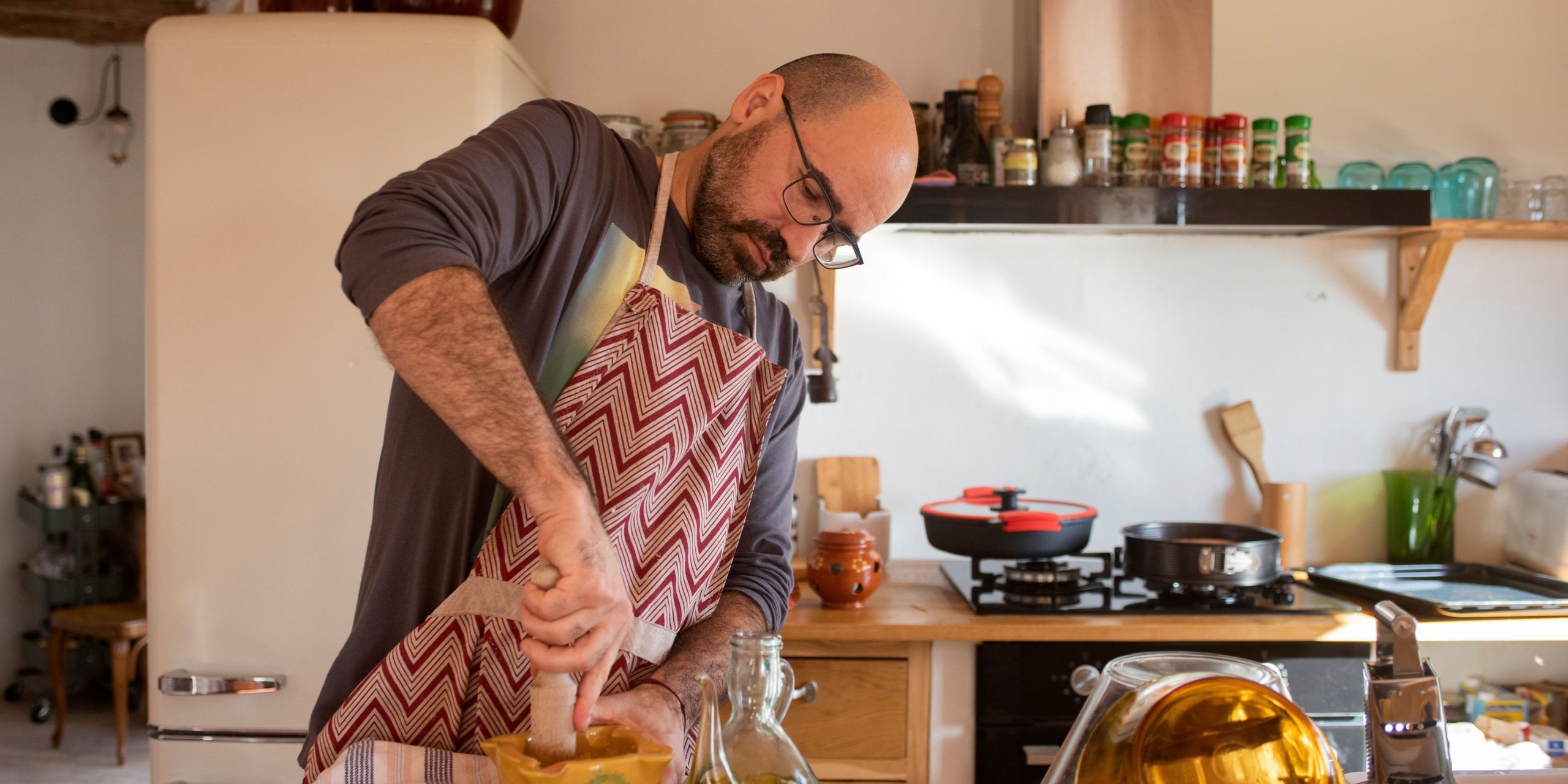It’s one of the best ways of getting to know a country and its culture. Learn the art of Spanish cooking, and enjoy a glimpse of a few favourite kitchens from our property listings too.
If you truly want to experience Spain like a local, there’s no better way than getting stuck into the kitchen. Cooking in Spain isn’t just about the food, it’s about the passion, the pace and the joy of sharing a good meal.
From bustling markets brimming with fresh produce to time-honoured family recipes passed down through generations, every dish tells a story. Whether you’re simmering a rich sofrito or perfecting your tortilla española, embracing local flavours is a delicious way to connect with Spanish culture.

Spain’s regional cuisine is wonderfully diverse, reflecting the country’s varied landscapes and cultural influences. In the north, Galicia is renowned for its exceptional seafood, while the Basque Country serves up bold, innovative dishes and pintxos. Catalonia blends Mediterranean flavours with French influences, featuring dishes like escalivada and crema catalana.
Central Spain, including Madrid and Castile, is heartier, with roasts, stews and cocido madrileño taking centre stage. Down south andalusia is the home of tapas, gazpacho and jamón ibérico, with strong Moorish influences. Along the eastern coast, Valencia is famed for paella and rice-based dishes.
Buying local produce
To cook like a local, you will need to first buy your ingredients. Since Spanish people use fresh and locally produced fish, meat, vegetables and fruits, a trip to your local market is a great place to start. Some of Spain’s large indoor markets are like an Aladdin’s cave of mouth-watering displays of colourful fruits and vegetables and it’s a pleasure to wander through comparing quality and prices. Even fish is superbly laid out to attract the eye and meat and cold cuts beckon as you pass by.

Markets are, however, not necessarily the cheapest places to buy your fresh produce. The numerous supermarkets in Spain also offer a good range of standard produce at a reasonable cost.
In Catalonia, Ametller Origen is an upmarket store specialising in fruit and vegetables with a fish counter and a butcher’s department. They have some excellent offers, usually two for a lower price, and the quality is first-class. For those who prefer organic produce, Veritas is a wholly organic supermarket selling fresh fruit and vegetables amongst the range of food items available.
Mercadona, Carrefour, Dia and Alcampo are all worth a look too. Better still, if you have room in your garden, designate a corner for growing your own tomatoes, cucumbers and peppers. There’s nothing to beat produce freshly picked and taken straight to the kitchen.
Traditional ingredients
Traditional Spanish cuisine is based on healthy ingredients and once you begin to cook like a local, you and your family will benefit in many ways. The Moorish influence introduced spices such as cinnamon, cumin, coriander and an essential spice, saffron. It also combined fruits such as raisins and dried apricots with meat dishes. In the north eastern region of Catalonia, the specialist dishes are a combination of fish and meat, known locally as Mar i Muntanya (Sea and Mountain), as Catalonia has both the coast and the Pyrenees.
In the south, cold soups are popular as the summers can be very hot. Most people know gazpacho, sometimes described as a liquid salad but my favourite is ajo blanco, a chilled garlic, almond and bread soup. It is easy to make and a good place to start when learning to cook like a local.
Extremadura, on the Atlantic coast, is home to some of the best cheeses and hams in Spain. One of its specialities is smoked paprika, which gives a subtle flavour to any dish. You can find smoked paprika in any supermarket and in specialist food shops. It’s also a good gift to take to people in the UK.

Galicia and the Basque Country are known for seafood of every description. Fish and shellfish aren’t cheap any more but there is a large variety on offer in markets and supermarkets so it pays to learn how to cook them properly. Oily fish such as mackerel (inexpensive), salmon (expensive), sardines (inexpensive), trout (wild trout is expensive but worth the extra euro!) are considered to be the healthiest but Spain loves tuna, both fresh and tinned and Cádiz has the tuna as its emblem. By the way, if you want to try some of Spain’s best cuisine, head there and you will be offered fantastic food and why not take some cookery classes as well?
When discussing Spanish cuisine, you cannot leave out rice. Grown in several regions, it is as much a staple as a potato. Rice holds a special place in Spanish cuisine, particularly along the eastern coast in regions like Valencia, where it forms the heart of many beloved dishes. The most iconic is paella, traditionally cooked in a wide, shallow pan and made with a variety of ingredients, from seafood and chicken to rabbit and vegetables. Beyond paella, there are countless regional rice dishes, such as arroz negro (black rice with squid ink) and arroz al horno (baked rice). Spanish rice culture celebrates both flavour and tradition, with each dish reflecting local tastes, ingredients and the communal spirit of gathering around a shared meal.
Let’s start cooking!
The Spanish don’t use much butter in cooking, preferring olive oil. They rarely use EVO (extra virgin olive oil) and instead use 4º olive oil, or aceite suave.
In Spanish cooking, aceite suave, a mild olive oil, is a kitchen staple, prized for its subtle flavour and versatility. Unlike extra virgin olive oil, which has a more robust and peppery taste, aceite suave has a gentler profile, making it ideal for everyday use in frying, sautéing and baking. It’s commonly used when the flavour of the oil shouldn’t overpower the dish, such as in light sautés, delicate fish recipes, or even in making tortilla española. While extra virgin olive oil is often reserved for drizzling or finishing dishes, aceite suave is the workhorse of many Spanish kitchens, striking a perfect balance between quality and neutrality.

Cooking a la plancha is a popular and simple Spanish method that involves grilling food on a flat, hot metal surface, much like a griddle. It’s a healthy way to cook, requiring little to no oil and allows the natural flavours of the ingredients to shine through. Commonly used for fresh fish, seafood, meat and vegetables, this technique creates a beautifully seared exterior while keeping the inside tender and juicy. Often seasoned with just a touch of salt, garlic, or a squeeze of lemon, dishes cooked a la plancha are light, flavourful and perfect for showcasing the quality of Spain’s fresh produce.
Asado is a traditional Spanish method of cooking meat, typically involving grilling over an open flame or hot coals. In Spain, particularly in regions like Castile and León, asado often refers to slow-roasting lamb or suckling pig in a wood-fired oven, resulting in incredibly tender meat with crisp, golden skin. It’s a simple yet flavourful approach that relies on quality cuts and careful, patient cooking. Often enjoyed during family gatherings or festive occasions, asado is as much about the social experience as it is about the food itself.

Tapas are a beloved part of Spanish food culture. Small, flavourful dishes designed for sharing and enjoying with drinks and good company. Ranging from simple offerings like olives and jamón ibérico to more elaborate plates such as patatas bravas, gambas al ajillo, or croquetas, tapas vary widely by region and season. More than just a way of eating, tapas encourage a relaxed, social style of dining. You can make tapas at home and they are a great way to begin to get into the habit of cooking like a local. Perhaps try out several at local tapas bars and try to make the ones you like best. There are plenty of recipes online to get you started.
Cooking like a local in Spain is all about embracing simplicity, seasonality and the joy of sharing. Whether you’re preparing a traditional dish passed down through generations or experimenting with fresh market finds, Spanish home cooking is rooted in passion and community. It’s not just about what’s on the plate, but the experience of gathering around the table, taking your time and savouring every bite. It also contributes to a healthy lifestyle.









